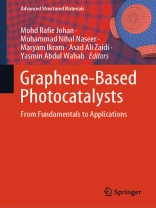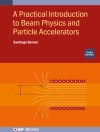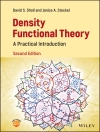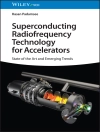This book provides a comprehensive overview of graphene-based photocatalysts, from the fundamentals to the applications. Graphene, the special material of the twenty-first century, has unique properties that make it an ideal candidate for use in photocatalytic activities. The book explores the basic principles of photocatalysis, including its mechanism and classification, and provides a historical overview and future prospects for the field. The synthesis and characterization of graphene for photocatalytic applications are discussed in detail, including controlling factors for graphene synthesis and its unique properties that make it an effective photocatalyst. It also covers a range of applications for graphene-based photocatalysts, including photocatalytic degradation of pollutants, hydrogen generation, water splitting, disinfection, and other potential uses. In addition, the book addresses strategies for enhancing photocatalytic activity and the factors that affect it. The economic perspective of cost-benefit analysis and life cycle assessment are also discussed.
It is a valuable resource for researchers, academics, and professionals working in the field of photocatalysis and ideal for those interested in the latest developments in graphene-based photocatalysts and their potential applications, including researchers, academics, and professionals in the fields of materials science, chemistry, and chemical engineering.
Tabla de materias
Part 1: Introduction.- Graphene: A wonder material of the 21st century.- Photocatalysis: Mechanism, classification and basic principles.- Historical overview and future prospects of photocatalysis.- Part 2: Synthesis and Characterization.- Graphene synthesis and characterization techniques for photocatalytic applicants.- Controlling factors for graphene synthesis.- Graphene unique properties for photocatalytic activities.- Part 3: Applications.- Photocatalytic degradation of pollutants.- Photocatalytic hydrogen generation.- Photocatalytic Water Splitting.- Photocatalytic disinfection.- Other photocatalytic applications.- Part 4: Concluding Thoughts.- Strategies for enhancement of photocatalytic activity /Factors affecting the photocatalytic activity.- Economic perspective (Cost benefits analysis).- Life Cycle assessment.
Sobre el autor
Prof. Dr Mohd Rafie Johan is the director of the Nanotechnology and Catalysis Research Center (NANOCAT), the University of Malaya. Previously, he was a professor of Materials Engineering in the Department of Mechanical Engineering of the University of Malaya. He received his Ph.D. in 2005 from the Department of Physics, University of Malaya. He is the author of 372 peer-reviewed (ISI) papers with H-index 41. Prof. Rafie is internationally recognized in the field of photocatalysis and nanotechnology and has been elected in Evaluation Panels for different national and international grants applications. Further, he has delivered invited speeches at multiple international conferences and hosted special issues in various journals. Currently, he leads Nanomaterials Engineering Research Group of 20 Ph.D. and 24 Master students. These supervised students span over a quite broad scientific area going from science (chemistry, physics, material science, biology) to engineering (chemical, material).
Muhammad Nihal Naseer is an Erasmus Mundus scholar pursuing a Joint Master Degree in Materials for Energy Storage and Conversion (MESC+) which is an Erasmus Mundus Joint Master’s Degree Program. He completed his bachelor’s degree in mechanical engineering at the National University of Sciences and Technology (NUST) Pakistan in 2021 and focused on thermodynamic modeling of energy conversion technologies. Nihal has published his research findings in prestigious journals and has co-edited three books with reputable publishers. He has expertise in thermodynamic modeling, energy analysis, and materials engineering, and has received multiple awards for his academic and research performance.
Maryam Ikram is a chemical engineer who recently graduated from the University of Engineering and Technology Lahore in Pakistan (2021). She is currently pursuing her Master’s degree in Materials for Energy Storage and Conversion (MESC+), an Erasmus Mundus Joint Master’s Degree Program. Her research interests lie in the field of developing materials and tuning their properties for hydrogen production. She aspires to contribute to the field of sustainable energy through her research work.
Dr Asad Ali Zaidi is an associate professor at Department of Mechanical Engineering, Faculty of Engineering, Islamic University of Madinah, Kingdom of Saudi Arabia. He has also served as the head of the undergraduate program, assistant professor of thermal sciences, and research supervisor at the National University of Sciences and Technology-Pakistan. He is skilled in materials, renewable energy, and low-cost waste utilization technologies. He is an author or co-author of more than 65 papers in international refereed journals and conferences. He has also given several invited/plenary talks at international conferences.
Dr. Yasmin Abdul Wahab is an assistant professor at Nanotechnology and Catalysis Research Center (NANOCAT) in Universiti Malaya. She has also served as the Head of Business Development Unit, oversees NANOCAT’s technical service teams responsible for testing and development of technology for multiple sciences and engineering domains. She led research/troubleshooting on various cost and cycle time reduction and productivity improvement projects. Her research interest includes semiconductors (materials, processes, and device fabrication technology), flexible electronics and energy technologies. She is an author of more than 160 papers in international refereed journals and conferences.












